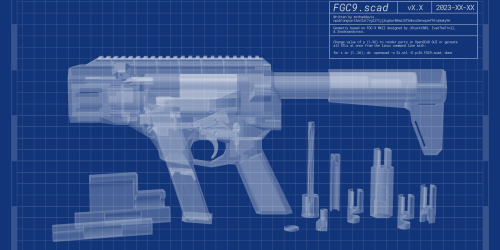3D printed guns continue to draw attention from lawmakers, tech platforms, and law enforcement. Difficult to trace, these ghost guns can be made at home with a 3D printer and the proper digital blueprints. But recent developments in the U.S. and U.K. point to a clear change: governments and companies are moving to close loopholes, block access to designs, and impose tougher penalties on those who break the rules.

Weapons and parts recovered from Guerrero’s Apartment. Image courtesy of New York District Attorney Bragg.
Closing Legal Loopholes in Minnesota
In Minnesota, a recent Supreme Court ruling made it legal for residents to possess ghost guns without serial numbers. In response, State Senator Ron Latz announced he will introduce legislation in 2026 to align Minnesota law with federal rules, which require serial numbers on these types of weapons.
Latz called the court decision a wake-up call: “No one could’ve foreseen a world where you could print the parts to make a gun at home, but that’s the world we live in today. This decision makes it clear that our state gun laws need to reflect this new reality and the increasing prevalence of ghost guns. As Wednesday’s decision lays out, it is up to the legislature on how we regulate these guns, and I will introduce legislation closing this loophole.”
As of late 2024, 15 U.S. states already had laws requiring serial numbers on ghost guns. Minnesota may soon join them.
Platforms Under Pressure
Digital design platforms that are ideal for users to share 3D printing files are also being pushed to act. Thingiverse, one of the largest storage sites of 3D design files, has begun using automated tools to detect and remove files for 3D printed firearms after talks with the Manhattan District Attorney’s Office.

Manhattan District Attorney Alvin Bragg. Image courtesy of Manhattan’s District.
According to DA Alvin Bragg, investigators from his office and the NYPD had found hundreds of downloadable designs for gun parts on the site. While Thingiverse already had rules against sharing illegal materials, the sheer volume of gun designs being uploaded meant existing moderation measures were falling short. Thingiverse now says it is committed to “fostering a safe, welcoming, and collaborative environment and is stepping up moderation to keep illegal weapon designs off its platform.”
Bragg’s office also sent a letter to 3D printer manufacturer Bambu Lab, urging it to adopt technology that can block the printing of gun parts. This type of software works by checking each print job against a database of known gun blueprints and using AI to recognize the shapes of standard weapon parts. While such measures wouldn’t eliminate ghost guns, the DA’s office says they could make it more difficult for untraceable firearms to be produced.
Bragg has described this as part of a broader effort to get tech companies to add safeguards that slow the spread of ghost gun blueprints. He says the goal is to make it harder for criminals to create 3D printed firearms.
First UK Prison Sentence for Attempting to 3D Print a Gun
Meanwhile, in the U.K., law enforcement confirmed its first conviction and prison sentence for someone attempting to make a 3D printed firearm. Zoe Watts, a 39-year-old from Lincoln, was sentenced to more than eight years in prison after police discovered parts for two 3D printed guns in her home, “one of which was only a single piece away from being functional.”
The investigation revealed Watts, a former police community support officer, had a cache of weapons, including knives and a crossbow, and had searched online for whether anyone had been killed by a 3D printed gun. She claimed she was making “toys,” but the court found otherwise.
Detective Inspector Gemma Skipworth of Lincolnshire Police said the case sends a clear message: “If you’re doing something wrong behind closed doors, it doesn’t mean you’re safe and can break the rules with impunity. 3D printers are becoming more and more popular, and people are naturally exploring what they can do with this technology. But it’s important to know that when you are downloading plans and using a machine to produce something like a firearm, you’re breaking the rules.
“And if you are caught, you will face a lengthy jail sentence – so please think about what you’re doing. This case shows how committed my colleagues are to keeping the people of Lincolnshire safe, and I’d like to say a huge thank you to everyone who worked on this case.”

3D printed gun CAD File. Image courtesy of Ed Markey via X.
All three cases point to a more coordinated push to regulate 3D printed guns and limit their use by criminals. Although some legal gaps are being tackled, blueprints can be shared privately, printers can be modified, and law enforcement still depends on resources and cooperation between governments and tech companies. But there is a clear direction that regulators and 3D printing companies are now paying close attention to 3D printed guns, especially to stop them from ending up in the hands of criminals.

